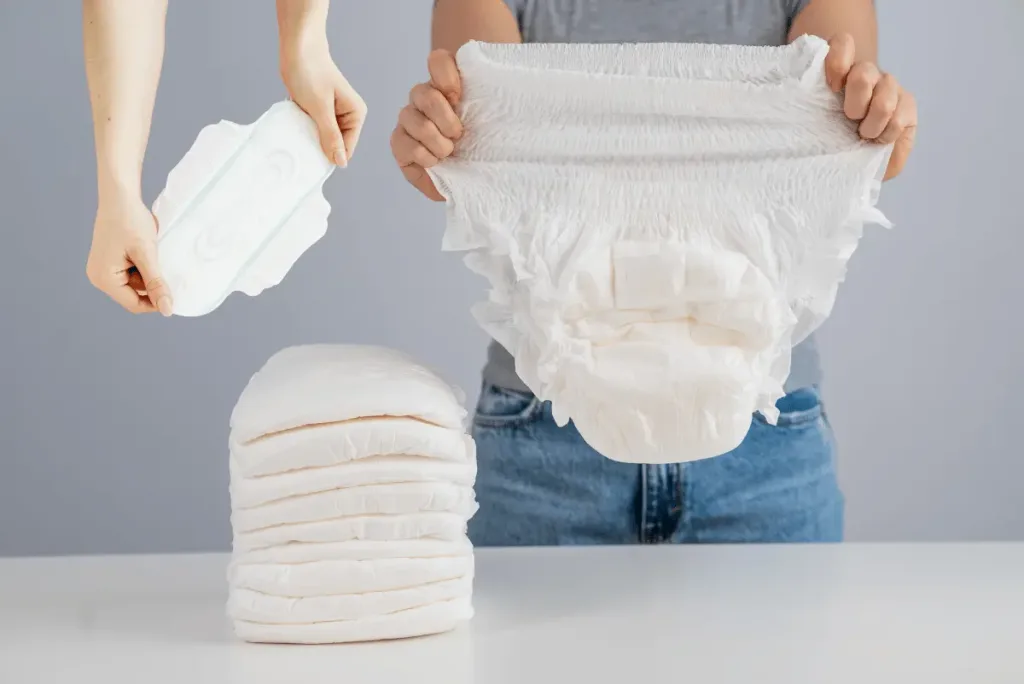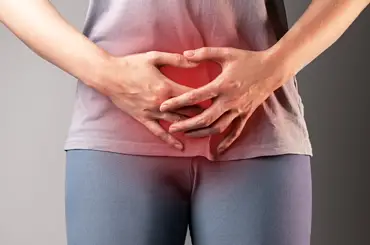There are several misconceptions associated with menstrual pads and their similarity to diapers. Most people assume that the two products are similar because they are both hygiene products. But do pads feel like diapers?
No, pads do not feel like diapers. While both pads and diapers are absorbent products, they offer distinct sensations during use. Pads are tailored for menstruation, while diapers are intended for infants and adults with incontinence.
In this blog post, I will discuss the differences between pads, from their functionality to their design.
Do Pads Work Like Diapers?
Yes, pads and diapers function similarly as they are both absorbent products. However, they are designed for different purposes and usage scenarios. Pads are for menstruation, offering targeted absorption and leak protection for menstrual blood during periods.
On the other hand, diapers are intended for infants or adults with incontinence issues, providing absorbency and leak protection for urine and feces.
They are worn around the waist and come with features like elastic leg cuffs and waistbands for a secure fit, unlike pads that are worn inside underwear.
Are Pads and Diapers the Same Material?
Pads and diapers are not made of the same material. While they are both absorbent products, their design and construction are different, which results in different materials being used.
Pads, which are used for menstruation, typically consist of a soft, cotton-like top layer that comes into contact with the skin for comfort. The absorbent core in menstrual pads is often made of superabsorbent materials, such as wood pulp and polymer gels, which efficiently absorb and retain menstrual blood.
On the other hand, diapers, which are used for managing urine and feces in infants and adults with incontinence, have different layers and materials.
They also have a soft top layer for comfort, but the absorbent core in diapers is designed to handle larger volumes of fluids, such as urine, and may contain different types of superabsorbent polymers to ensure extended dryness.
How Pads Differ from Diapers in Design and Function
Pads and diapers differ significantly in their design and function, catering to distinct needs and usage scenarios. Here’s a list and explanation of the key differences between pads and diapers:
1. Purpose and usage
Pads are designed primarily for menstruation. They are worn inside underwear to absorb menstrual blood during periods. Pads are disposable and come in various sizes and absorbency levels to cater to different flow intensities.
Diapers are intended for infants and adults with incontinence issues. They provide absorbency and leak protection for urine and faeces. Diapers are worn around the waist and secured with adhesive tabs or stretchable waistbands. They come in various sizes to accommodate different age groups and body shapes.
2. Absorbency levels
Menstrual pads are designed to handle menstrual blood, which typically has a lower volume compared to urine and feces. They provide targeted absorption for menstrual flow and are optimized for quick absorption to keep users comfortable and dry.
Diapers are engineered to handle larger quantities of urine and feces. They are made with super absorbent materials that can retain significant volumes of liquids, keeping the wearer dry and reducing the risk of leaks.
3. Coverage area
Menstrual pads are narrow and focus on absorbing blood from the vaginal area. They provide coverage in the center of the underwear and are not meant to extend to the back or front.
Diapers are designed to cover a larger area, including both the front and back of the wearer. They provide full coverage around the waist and thighs, ensuring containment and preventing leaks from all directions.
3. Design features
Menstrual pads are thin and discreet to provide comfort during menstruation. They come with adhesive wings to secure them to the underwear and prevent shifting during movement.
Diapers have a more complex design with elastic leg cuffs and waistbands to ensure a snug and secure fit. The leg cuffs help prevent leaks from the leg openings, and the waistbands provide additional support to keep the diaper in place.
4. Wear time
Menstrual pads are typically changed every few hours, depending on the flow intensity, to maintain hygiene and prevent leaks.
Diapers are designed for longer wear, and their absorbency allows wearers to use them for several hours before changing. For infants, diaper changes are frequent to maintain cleanliness and comfort.
Can I Use a Diaper as a Pad?
Yes, you can use a diaper as a pad, but is not the best alternative. While you may use a pad as a temporary measure in certain situations, it may not provide the same level of coverage, absorbency, or leak protection as a diaper.
Pads are intended to be used in underwear and are not equipped to handle larger quantities of urine or faeces, which are typical for diapers.
If you find yourself in a situation without access to a diaper and need temporary absorbency for incontinence issues, using a pad as a makeshift solution might be possible.
However, keep in mind that pads are not optimized for this purpose, and you should seek appropriate incontinence products as soon as possible for optimal comfort and protection.
Frequently Asked Questions
Will pads hold pee?
No, Pads can not effectively hold or manage urine. They are primarily optimized for absorbing menstrual blood and providing leak protection in the vaginal area.
Conclusion
Pads and diapers serve unique and essential purposes, each designed to cater to specific needs and usage scenarios. Pads are primarily intended for menstruation, providing targeted absorption and leak protection for menstrual blood.
On the other hand, diapers are specially crafted for infants and adults with incontinence issues, offering extensive coverage and high absorbency for urine and feces.
In summary, while you can use a pad as a temporary substitute for a diaper in certain circumstances, it’s best to use each product for its intended purpose to ensure proper absorption, comfort, and protection.






